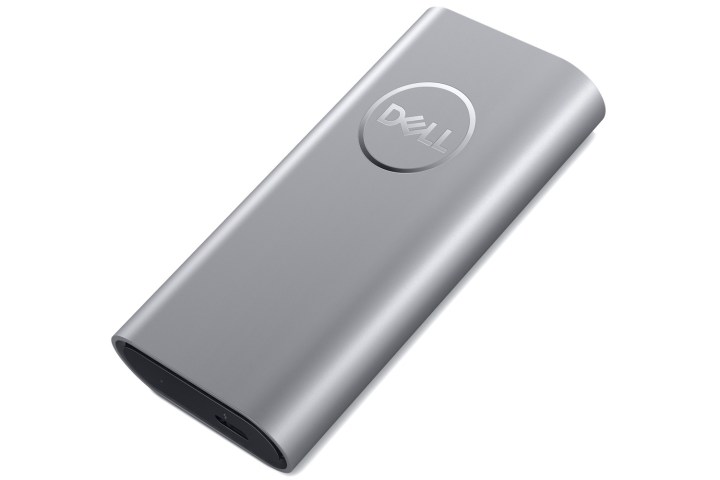
But don’t blow it off as another measly storage stick just yet. According to Dell, the NAND technology crammed into its Portable Thunderbolt 3 SSD is exactly what the company uses in its PCs. That indicates the device has similar read and write speeds, promising up to 2,650MB per second data storage rates. It’s backed by Thunderbolt 3 technology supporting data transfers to and from the parent PC at up to 40 gigabits per second (1Gb = 125MB).
Of course, data transfers will depend on the parent PC despite the drive’s support for Thunderbolt. USB-C ports offer a variety of connection speeds based on the technology behind the interface: USB 2.0 at 480Mbps, USB 3.1 Gen1 at 5Gbps, and USB 3.1 Gen2 at 10Gbps. Even more,
“Unlike HDDs, SSDs have no mechanical storage components, making them more resistant to data loss caused by knocks, drops, and other ‘on-the-go’ abuse,” Dell states. “[It] uses the same internal SSDs as Dell PC systems, specified to high endurance and reliability standards and covered by Dell’s three-year limited hardware warranty, so you can be assured of the quality of the drives.”
SSDs are better than external hard drives because there are no moving parts. Hard drives are similar to old-school record players, packing multiple, stacked magnetic records, aka platters. Each spinning platter is read by its own arm sporting one read head, and one write head. Eventually all these moving parts will fail, resulting in data loss. That’s not the case with SSDs.
Typically, SSDs rely on cells that store data even when the device isn’t receiving power. These cells are spread out like a city block, resembling office buildings with up to three floors. A built-in controller sends and retrieves data from these office buildings as data moves to and from the parent PC. SSDs are normally faster than mechanical hard drives by a large amount, making them more ideal as both internal and external storage solutions.
Although USB sticks rely on flash memory technology, they’re not always as fast as external SSDs. Part of the bottleneck stems from the connection: There’s no sense in using high-performance flash if the port connection only supports 480Mbps. For instance, Kingston’s DataTraveler HyperX Predator USB stick provides 1TB of storage, but only has a 240MB/s read speed and a 160MB/s write speed due to its USB 3.1 Gen1 connection.
But Dell’s compact Thunderbolt-based SSD packing high read/write speeds doesn’t come without a cost. The 500GB model will set you back $439 while the 1TB version will cost a hefty $799 when they hit the market next month.


